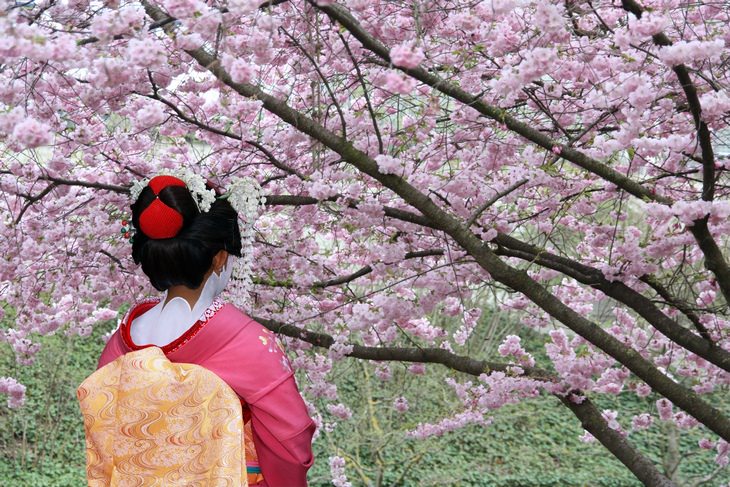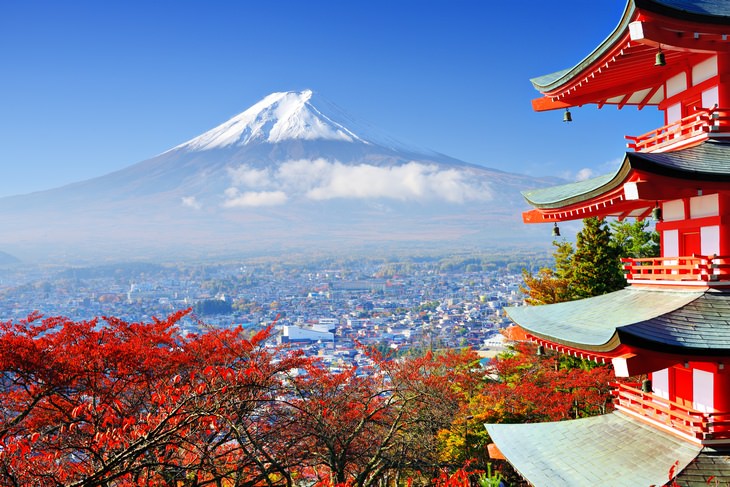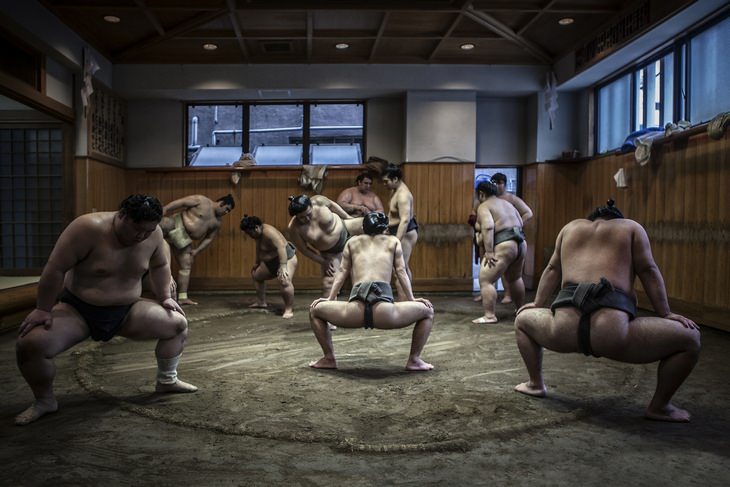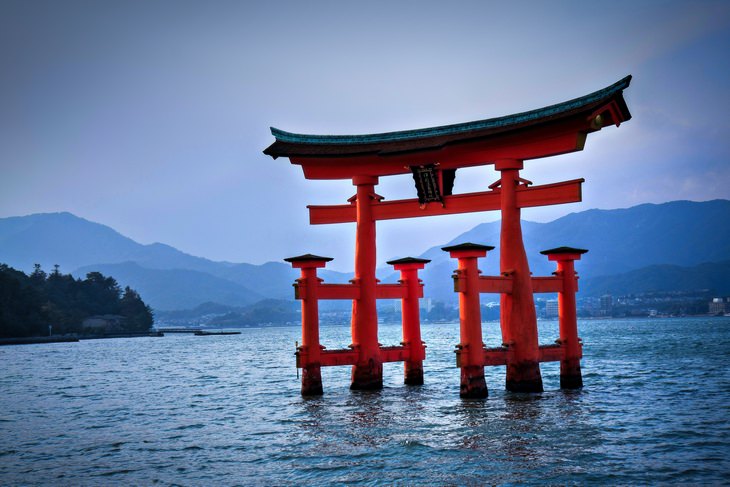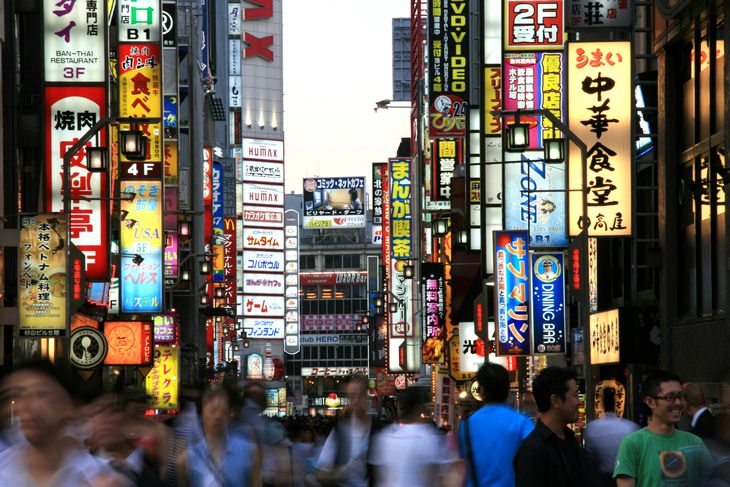1. Think About the Season When Planning Your Trip
Hands down, the best time to experience Japan is either autumn or spring. That’s because one of Japan’s major selling-points is its breathtakingly lush nature, and the best way to view it is either in full spring bloom or vivid fall colors.
Springtime is when the world-famous cherry blossoms can be seen, while the scarlet foliage of autumn is equally as beautiful if somewhat less talked about outside of Japan.
2. Bring Comfortable Walking Shoes
If you’ve ever wondered how come Japanese people are, on average, very thin, it’s because they love walking, and they love stairs even more than they do flat surfaces. If you don’t want the long walks to wear you down and ruin your experience, make sure to bring a pair of dependable walking shoes and appropriate shoe inserts.
3. Use a Voice-Operated Translation App to Communicate
Japanese people love incorporating English terms into their language and pop-culture, often without fully understanding what these terms mean within an English-language context. The truth of the matter is that most Japanese speak very little English (but those who do, often speak it perfectly). That shouldn’t deter you, as nowadays translation apps can be used to great effect.
Using Google Translate or similar apps, you can have a spoken conversation with local people, scan signs and documents and get by without a hitch.
4. Check the Weather Before Going out to the Countryside
As a northerly island nation, Japan is rather rainy, with precipitation pretty much all year long. So if you’re planning on going to the Japanese countryside to view nature, especially the majestic Mt. Fuji, you would be best advised to check the weather before and be flexible with your program. If you were planning to view Fuji on a specific day and it turns out to be overcast- reschedule. The mountain will remain there, and driving out for more than an hour to see the beginning of a mountain shrouded completely in clouds isn't quite worth it.
Make sure you're checking out the weather of the specific area you're visiting; Japan is huge with greatly varying weather conditions, so just because it's bright and sunny in Tokyo, it doesn't mean the same applies to Kamakura or Fujinomiya.
5. Watch a Sumo Training Session
Many traditional customs sound fascinating on paper but are rather dull to experience for most people. The deliberate and impenetrable tea ceremony, for example, can be a profound spiritual experience for some, but for many others, it’s as interesting as watching paint dry.
Sumo is nothing like that. Sumo isn’t just “two nearly-naked obese guys crashing into another”, it’s an extremely technical wrestling art form, where balance and momentum matter over bulk and strength. If you’re a fan of competitive sports, sumo is a must-see.
Official tournaments are held every other month, but outside of those, you can always visit at sumo stable to watch the wrestlers practice. It’s also 100% free of charge!
6. Japanese Sushi Isn’t Like Anything You Know
Okay, so you absolutely adore sushi. But are you sure you know what sushi is actually like? If you’ve had sushi in the west, chances as are the first thing that comes to your mind when we speak about sushi is makizushi, or sushi seaweed rolls. But maki isn’t nearly as ubiquitous in Japan as it is in western sushi joints.
The most popular sushi in Japan, rather, is nigiri, which is a rice patty topped by a cut of fish (tuna, typically, as salmon was only introduced to Japan in the 70s by a Norwegian businessman), shrimp, octopus or Japanese omelet.
If you do happen upon sushi rolls, those are typically small and contain only fish and rice. Meanwhile, futomaki, the heftier rolls we’re accustomed to with several different fillings, are very rare, and inside-out sushi rolls are nowhere to be found.
Likewise, if you’re used to dipping your sushi in teriyaki or spicy mayo, be prepared for disappointment, as most places only serve soy sauce. And if wasabi isn’t your cup of tea, you have to specifically tell the staff to hold the wasabi, as it is customary to serve the sushi with the wasabi added to the rice.
7. Avoid the Gimmicks and Tourist Traps
Japan is full of all sorts of curiosities and bizarre attractions, but not all of them are necessarily worth seeing or experiencing. Sleeping in a traditional-style Japanese inn may sound appealing until you realize this means laying your head on a thin mattress on the hard floor for a fee that’s probably higher than a normal hotel room. If you want to see this type of building from the inside, there are museum exhibits that offer the same experience without having to suffer for it.
Things like animal cafes sound cute, but these types of shops charge a fee for every 30 minutes you spend in the place. On top of that, many of cafes hold feral animals in unnatural conditions, and in the cases where its domesticated animals like cats, the animals are usually apathetic to human presence and aren’t as cuddly as you might wish.
8. Immerse Yourself in Japanese Tradition
Japan is a country with a rich and ancient history spanning thousands of years, which is very much present wherever you go, be it in the form of Zen gardens, mighty samurai-era fortresses, and pristine shrines and temples. Make sure to visit an example of each of those at least once. Entry to Shinto shrines and Buddhist temples is free of charge, though prayer costs around 10 yen, and inscribing a plaque with a wish costs 500-1,000 yen.
Outside of these, there are many museums all across Japan dedicated to preserving the knowledge of the country’s fascinating past, from feudal times to the early modernization and even the darker imperial years.
9. Experience the City in All of Its Glory
Japan is a country of stark contrasts, and alongside all of the beautiful temples exists a hypermodern cityscape full of an incredible array of entertainment venues and shopping opportunities.
No visit to Japan is complete without visiting the neon alleyways of Shinjuku and Shibuya in Tokyo, or the colossal Skytree mall.
A great idea to top off a day of intense walking and sightseeing would be a karaoke bar or an arcade, and if you are a fan of Japanese animation, there are many stores full of figurines, comic books, and other memorabilia to suit your tastes.

